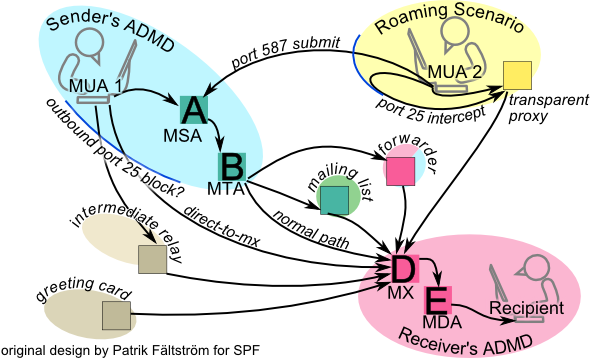EMAILS
A schematic representation of the most common ways that an email message can get transferred from its author to its recipient. Retrieved April 10, 2015
Freely derived from Patrik Fältström work for SPF, available at http://fixforwarding.org/wiki/mail_flows
Email, or "electronic mail," evolved from a system called MAILBOX, which was developed at MIT around 1965; it was used to send messages between users of a sole computer.
Email as we know it today evolved in 1972, when the "@" sign was developed by Ray Tomlinson to symbolize sending messages between computers. Email worked efficiently to send messages where using a phone would be either expensive or physically impossible (Peter, 2004).
In higher education, people were able to get by without using email up until about a decade ago; as a graduate student at NYU in 1998, I rarely used my email address. I still know professors who prefer not to be accessible via email to their students, as they feel this creates a 24/7 connection with no offline privacy.
Reference
Peter, I. (2004). "The history of email." Retrieved April 10, 2015 from http://www.nethistory.info/History%20of%20the%20Internet/email.html. 
No comments:
Post a Comment